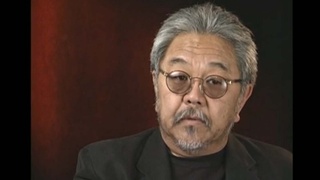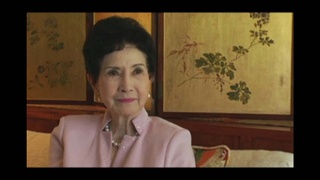Interviews
To be a Nikkei is a confluence of cultures (Spanish)
(Spanish) I have heard everything with respect to this [topic]. I can tell you my personal opinion. For example, I find that some descendants believe that they do not feel centered, like they do not pertain to either culture [Peruvian or Japanese]. I have a different opinion: a different opinion, one that shows that I don’t completely agree [with those who do not feel part of either culture]. I believe that being Nikkei gives you a great advantage. Why? A Peruvian Nikkei – I am not so sure if a Latin American Nikkei – but yes, a Peruvian Nikkei. What is it that happened? A Peruvian Nikkei has a Japanese side that includes all the values, all sides of honesty, of hard work, [both of which] come together, and that comes inherently because you live it in your family, in your friends, this sentiment of which you see another Nikkei [and] you feel at ease; you feel like you can talk to that person or simply entrust that person with something because deep inside you know that he or she is going to carry out [what you entrusted him or her to do]. What is it that is good about a Peruvian? What is good is that he or she is not pigeonholed [with a certain, fixed personality], [someone who] seeks imaginative solutions and has a lateral way of thinking [as opposed to someone who] very often abides by the rules, [and who] will not be able to fulfill a clear objective in a relatively short time. Therefore, I believe that the Nikkei have this confluence, [that the Nikkei] have [these] values linked with astuteness, linked with a creole part [meaning a racial mix], but [I am] speaking in the best sense of the word. And that is in the form with which I identify. Therefore, when they tell you something [which makes] you feel Nikkei, I say: “You feel very well.” I am happy to be part of two cultures that have many good [qualities], and together they can offer [us] so much.
Date: September 14, 2007
Location: Lima, Peru
Interviewer: Harumi Nako
Contributed by: Asociación Peruano Japonesa (APJ)
Explore More Videos

Rediscovery of Japanese culture through taiko (Japanese)
Shishimai (Lion dance) and Taiko player with San Francisco Taiko Dojo.

Japanese American community life
(b. 1939) Japanese American painter, printmaker & professor

Starting over after the war: denial of all things Japanese
(b. 1923) Nisei from Washington. Resisted draft during WWII.


The Japanese society reacts to Nikkei living in Japan (Japanese)
Tsuda College President, researcher of Nikkei history

The identity of Nikkei Canadians seen in the Buddhist Church (Japanese)
Tsuda College President, researcher of Nikkei history

Nikkei means fusion (Spanish)
(b. 1969) Former president of Centro Nikkei Argentino.

Easier to be a foreigner in Japan (Spanish)
(b. 1969) Former president of Centro Nikkei Argentino.

The various realities of Nikkei in Latin America (Spanish)
(b. 1950) Nisei Chilean, Businessman


Growing up with Japanese language and values
(1925 - 2018) Nisei educator from Hawai‘i

The political effects on Nikkei during the war (Spanish)
(b. 1950) Nisei Chilean, Businessman

To be more Japanese than you really are (Spanish)
(b. 1950) Nisei Chilean, Businessman


The importance of learning cultural diversity (Spanish)
Sansei Argentinean
